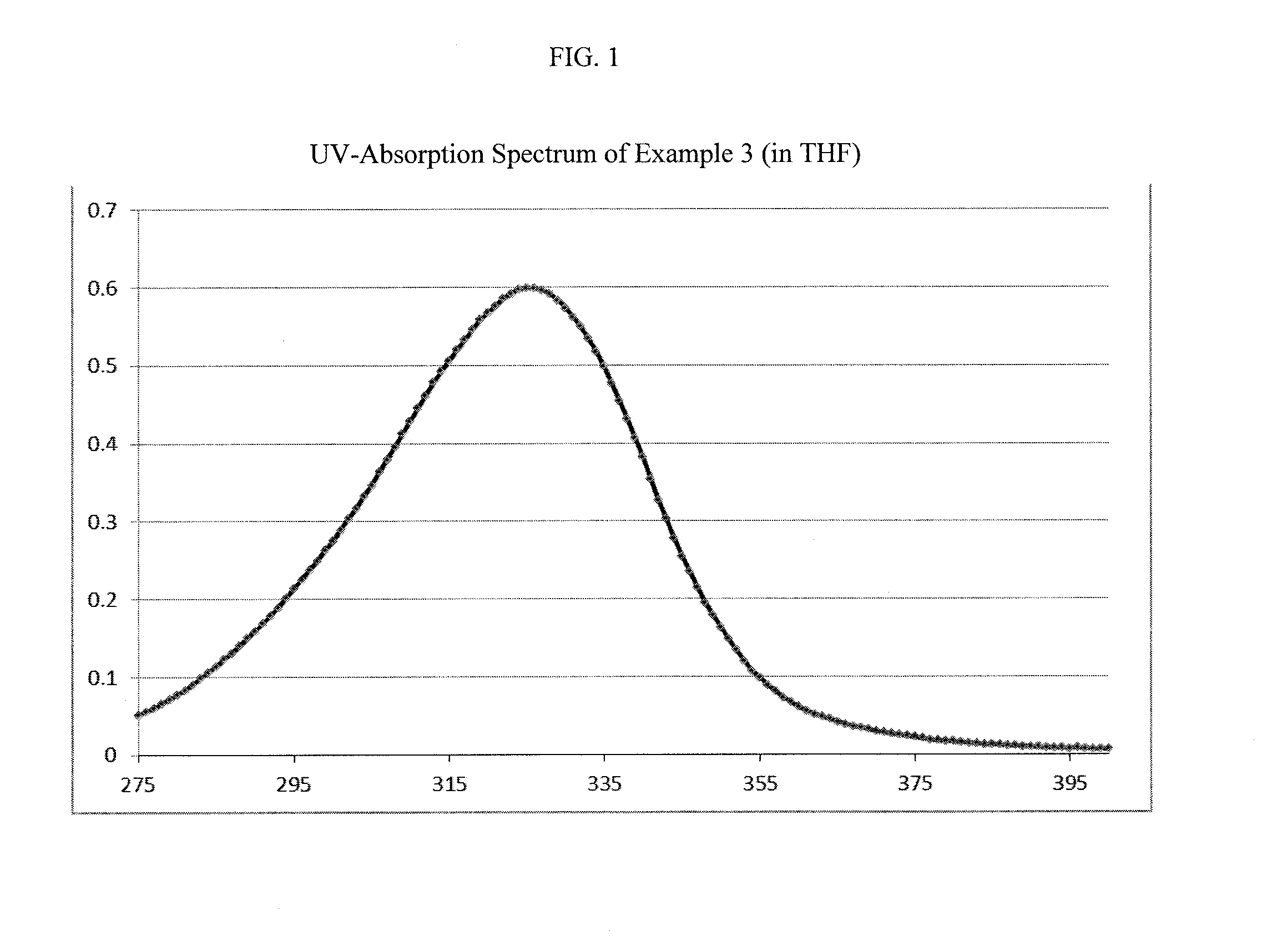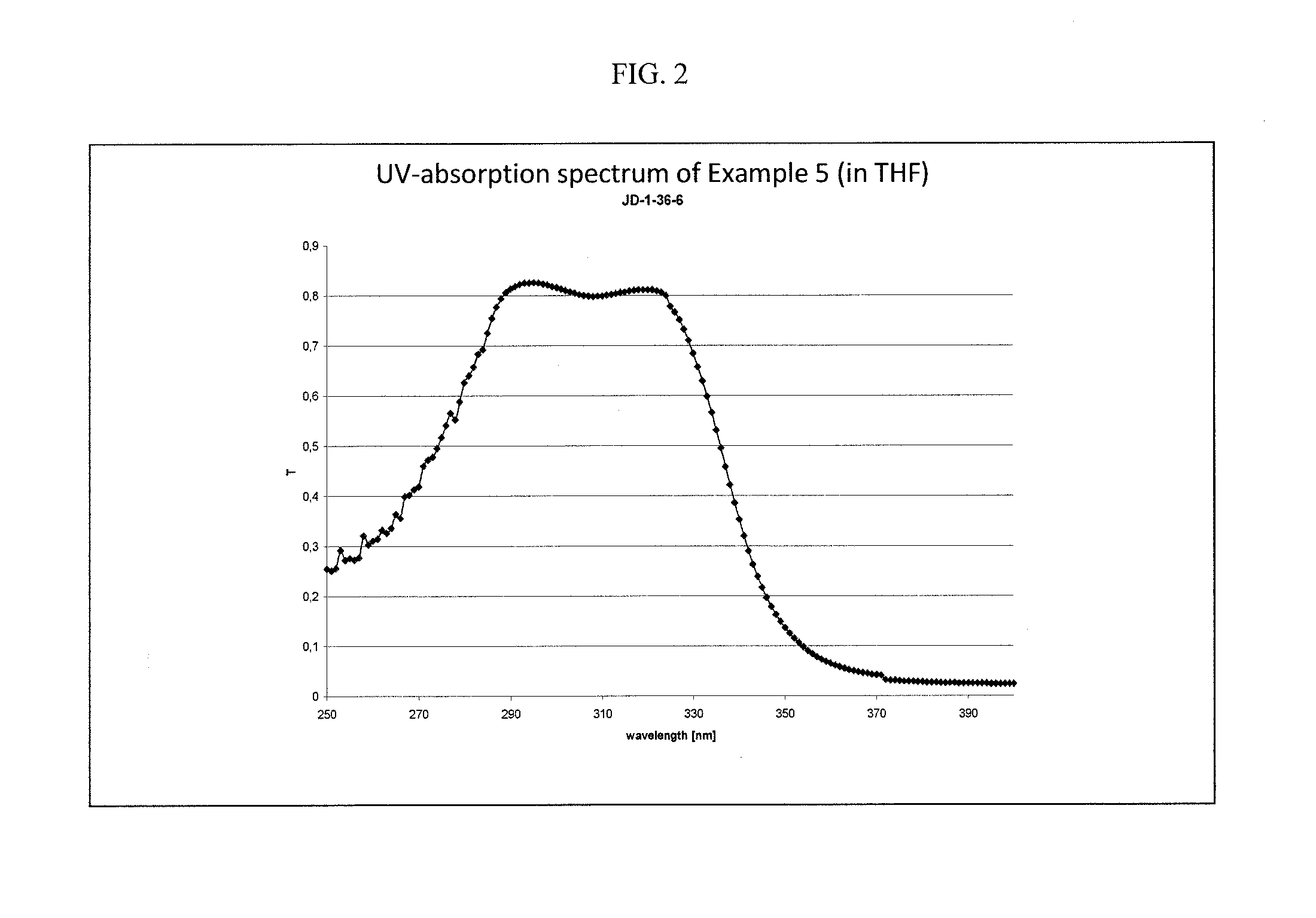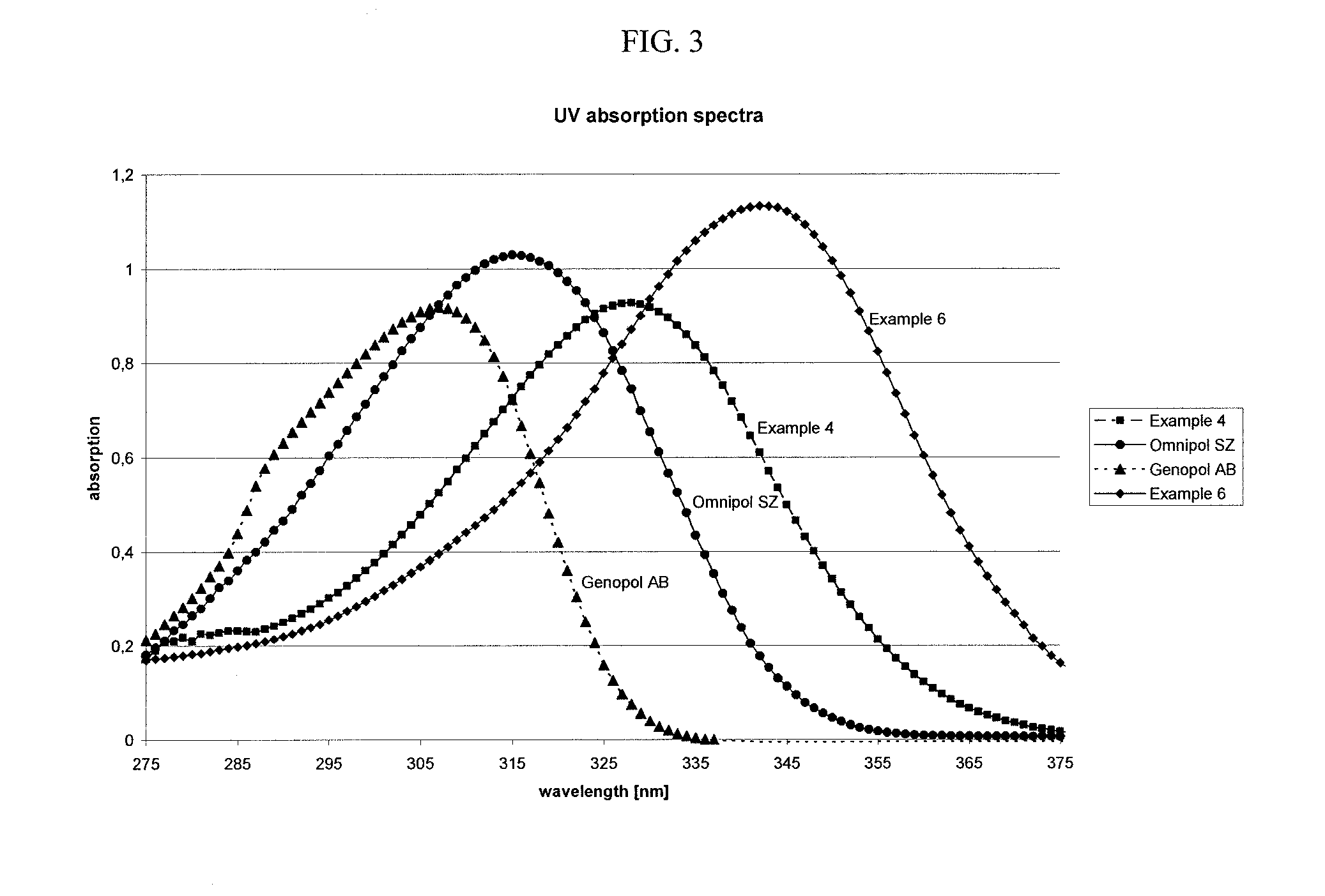Oligomeric aminoketones and their use as photoinitiators
a technology of aminoketones and photoinitators, applied in the field of aminoketones, can solve the problems of migration, contamination, odor or off taste, etc., and achieve the effect of low migration of chemical species
- Summary
- Abstract
- Description
- Claims
- Application Information
AI Technical Summary
Benefits of technology
Problems solved by technology
Method used
Image
Examples
example 3
Synthesis of an Aminoketone of the General Formula I
[0090]
wherein n and Y are as defined above.
[0091]40.8 g (0.25 mol) 4-dimethylamino acetophenone, 175 ml (4.3 mol) of methanol and 6.7 ml (7.3 g; 0.09 mol) of formalin (37% strength in water) were introduced to a four-necked flask and heated therein, with stirring and under a nitrogen atmosphere, to 60-65° C. 8.0 g of sodium hydroxide solution (25% strength in water) were added, and the reaction mixture heated up to 67° C. Over 30 minutes, 12.3 ml (13.4 g, 0.165 mol) of formalin (37% strength in water) were added and the reaction mixture was heated to 69-75° C. and held under reflux for 5 h. Then, methanol and water were distilled off. The obtained mixture was washed with warm water (200 ml, 80° C.) by intense stirring and the washing media was decanted when cooled to 45° C. This washing procedure was repeated three times. The obtained yellow resin was dried in vacuum.
[0092]Optionally, the resin was re-precipitated by drop-wise addi...
example 4
Synthesis of an Aminoketone of the General Formula I
[0094]
wherein n, m, and Y are as defined above; and
the molar ratio between n and m is 1:1.
[0095]245.0 g (1.5 mol) of 4-(dimethylamino)acetophenone, 180 g (1.5 mol) of acetophenone, 600 ml (14.8 mol) of methanol and 88.0 g (0.18 mol) of formaldehyde solution (37% strength in water) were placed in a four-necked flask and heated with stirring under a nitrogen atmosphere to 60-65° C., resulting in a clear solution.
[0096]96 g of 25 wt. % strength sodium hydroxide solution (0.6 mol) were added and the reaction mixture was heated to 67-70° C. During a period of 45 minutes, 148 ml (161 g, 1.98 mol) of formaldehyde solution (37% strength in water) was added, and the reaction mixture was then heated to 69-75° C. and held under reflux for 5 h. Methanol / water was removed by condensation up to an inner temperature of the refluxing media of 81° C. (˜540 ml collected).
[0097]The obtained resin was washed with boiling water (1000 ml) and the washin...
example 5
Synthesis of an Aminoketone of the General Formula I
[0100]
wherein n, m, and Y are as defined above;
is an integer from 1-50; and
the molar ratio of n:m:o is 1:1:1.
[0101]49.1 g (0.25 mol) of 4-acetylbiphenyl, 30.0 g (0.25 mol) of acetophenone, 40.8 g (0.25 mol) of 4-dimethylamino acetophenone, 35 ml of ethanol, 0.25 g of benzyltriethylammonium chloride, and 11.2 ml of 37 wt. % aqueous formaldehyde solution in water were placed into a four-necked flask equipped with a mechanical stirrer, inner thermometer, dropping funnel (sodium hydroxide solution and later formaldehyde solution), and a reflux condenser equipped with a distilling controller dividing the reflux. The substances were heated therein with stirring to ˜80° C. in an inert nitrogen atmosphere, resulting in a yellow clear solution. 18.8 g (0.19 mol) sodium hydroxide solution (40 weight % in water) was added drop wise to the reaction mixture at 70° C. An exothermic reaction started heating the mixture to about 78° C., resulting ...
PUM
| Property | Measurement | Unit |
|---|---|---|
| wavelength | aaaaa | aaaaa |
| molecular weight | aaaaa | aaaaa |
| temperatures | aaaaa | aaaaa |
Abstract
Description
Claims
Application Information
 Login to View More
Login to View More - R&D
- Intellectual Property
- Life Sciences
- Materials
- Tech Scout
- Unparalleled Data Quality
- Higher Quality Content
- 60% Fewer Hallucinations
Browse by: Latest US Patents, China's latest patents, Technical Efficacy Thesaurus, Application Domain, Technology Topic, Popular Technical Reports.
© 2025 PatSnap. All rights reserved.Legal|Privacy policy|Modern Slavery Act Transparency Statement|Sitemap|About US| Contact US: help@patsnap.com



